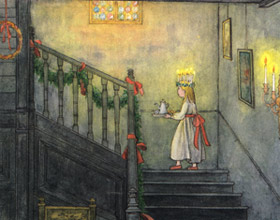Griffin & Sabine

Griffin and Sabine, An Extraordinary Correspondence, written and illustrated by Nick Bantock grew into a series of six books that achieved great popularity and are some of my very favourites. I love the artwork, letters inside envelopes and postcards that invite a slow savouring, a sweet pleasure of opening mail and reading hand-written letters. Something that is not so common today with the speed and ease of electronic communication. In fact, Nick Bantock and his art exhibition were the subject of a blog post here a couple of years ago.
Now there is a play, an adaptation of the Griffin & Sabine series. Called a lyrical romance, this world premiere is now playing to November 4th at the Arts Club’s Granville Island Stage in Vancouver. Here’s a description from the theatre site:
“How can I miss you this badly when we’ve never met?”
Travel through the lush, mystical universe of Griffin & Sabine, based on the internationally renowned series of books by Nick Bantock. Griffin Moss and Sabine Strohem are two artists who live half a world apart. He is an isolated, hesitant English postcard designer, while she is a confident illustrator of postage stamps and very much a creature of the South Seas. The pair exchange love letters, unaware that their profound connection will draw them into a surreal realm of haunting figures and intrigue.
View the list of actors and a few video clips about the cast and audience reactions.
Like many fans, we wondered how these books can ever be made into a play. Some time ago I read a fascinating article about the long and challenging process of transforming this very visual and ephemeral story into a stage play. Really worth a read.
Anyway, we went to see it earlier this evening. It was well done in most respects. We liked the minimalist set with projected images of Bantock’s artworks and the interesting changing lighting. A bass player and a percussionist hidden in the shadows provided occasional background music. Knowing it’s an immensely challenging proposition to stage such an otherworldly story, it was fairly successful. However we thought it was rather rushed in the two hours, the actors speaking too fast. (I had difficulty understanding Griffin’s English accent, though it was authentic to the character, but that’s just me.) It’s the usual dilemma of condensing a book or books into a short time. My husband had not read the books (he rarely reads fiction) so he had no preconceptions and expectations and thought it well done but also felt it was rushed, the speech sometimes too “clinical”.
We’d still recommend it highly for its unique artistic achievement. We did wonder if it would make a great digital animation movie.
Image: part of the artwork on the cover of The Golden Mean by Nick Bantock, scanned from my copy.

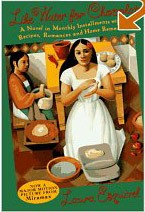
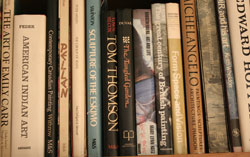
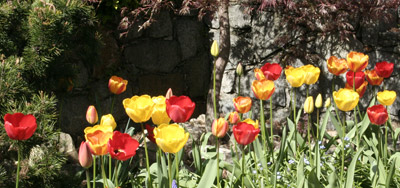
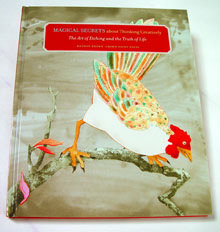
 The much-anticipated musical theatre version of The Lord of the Rings made its formal début in a gala première in Toronto on Thursday evening, and the reactions of the audience suggested that the massive production would not be leaving town very soon.
The much-anticipated musical theatre version of The Lord of the Rings made its formal début in a gala première in Toronto on Thursday evening, and the reactions of the audience suggested that the massive production would not be leaving town very soon.